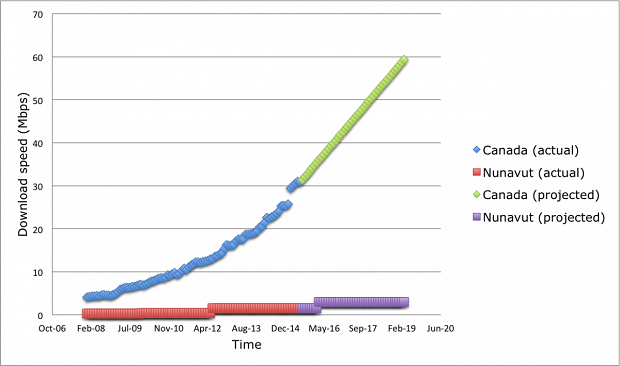The Canadian Radio-television and Telecommunication Commission (CRTC) yesterday heard from several groups that Canadians in rural areas of the country are badly in need of better Internet service.
For instance, in communities throughout Nunavut and Nunavik, Internet-based communication is a vital link to the rest of Canada, but broadband access in these areas is slow, unreliable and expensive.
The Eastern Ontario Regional Network (EORN) and the Eastern Ontario Wardens’ Caucus (EOWC), meanwhile told the national regulator something must be done to make rural broadband access at par with those in urban areas.
These concerns were raised during the second day of the CRTC hearing on broadband access.
RELATED CONTENT
CRTC kicks off hearing on Internet access
“For us, (telecommunications) is the difference between being remote and being isolated,” Jean-François Dumoulin, with the Kativik Regional Government-operated Tamaani Internet, told the CRTC. “But like all infrastructure in the Arctic, it remains fragile, extremely costly and difficult to operate.”
Following its last review of Internet service in Canada in 20112, the CRTC set a target download speed of five Mbps to be made available across the country by the end of 2015. But according to a report from
Following its last review, the commission set a target of download speeds of five Mbps to be made accessible across the country by the end of 2015. However, according to the Nunatsiaq Online, Many communities in the Canadian Arctic still do not have Internet service that is at that level. Communities have had to rely on satellite communication service.
Organizations in Nunavik and Nunavut “have called for broadband Internet access, or high-speed Internet to be included in the definition of basic telecommunication services under the CRTC’s mandate,” the publication said.
“The North needs fibre,” the Nunavut Broadband Development Corp., said in its submission to the review yesterday. “Without a series effort to address the digital divide — urban and rural, rich and poor, indigenous and non-indigenous — the benefits of broadband will be largely reserved for the privileged,” the corporation said.
To find out more about this, click on this link to get to the whole story.
“Frankly, recent CRTC reports suggesting that Canadian ISPs are meeting or exceeding their marketing promises fall flat in rural areas. That is simply not the experience for all rural subscribers,” said EORN Chair David Burton, Reeve of Highlands East.
“The CRTC has to reflect the reality of modern life – both urban and rural. In our communities as in most Canadian communities, high-speed broadband must be considered a basic service,” said EOWC Chair Peter Emon, Warden for Renfrew County.
“The CRTC has to reflect the reality of modern life – both urban and rural. In our communities as in most Canadian communities, high-speed broadband must be considered a basic service,” he added. “Furthermore, basic service should also include high-speed mobile broadband access, given how smartphones and tablets are commonplace in every home or business.”

